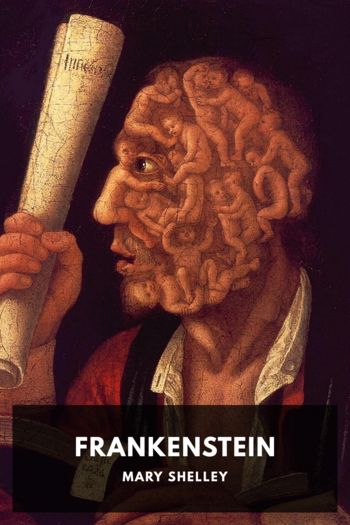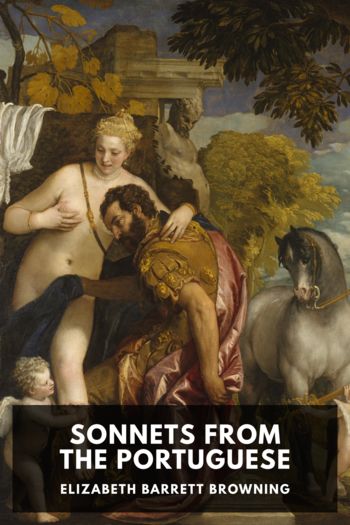Two-Way Mirror, Fiona Sampson [children's ebooks online .txt] 📗

- Author: Fiona Sampson
Book online «Two-Way Mirror, Fiona Sampson [children's ebooks online .txt] 📗». Author Fiona Sampson
She’s afraid of turning into an intellectual woman, of the kind who ‘used to—frighten me more than any woman I ever knew. There used to be fear for me even in the pure intellect of her eye.’ In a way, what she fears is what she’s always pictured as the masculinity within her own make-up: a poetic vocation that, ever since her tomboy childhood, has been muddled up with the almost exclusively male role models, from Homer to Byron, that are available to her. Later generations of writing women will be released from similar anxieties by realising that the intellect is gender-free. Or at least by recognising that male writers are simply the historically available models, and that with more history this will change. But becoming a writer always has to do with individuation: a matter of making, or failing to make, private sense of the writing task.
Elizabeth has always understood that developing as a writer is no accident; sharpening her technique, she treats even letters as compositions. Now this process of poetic self-invention is bearing fruit. When The Seraphim appears in June 1838, its reception makes clear that this is a real achievement. Reviews start to appear immediately, and are substantial. The Sunbeam’s coverage extends across ten pages and five issues – an honour it otherwise accords only to Thomas Carlyle’s Sartor Resartus – framing her as an important new figure. Pieces appear in The Atlas, The Examiner, The Athenaeum, Blackwood’s, The Metropolitan Magazine, The Monthly Review, The Literary Gazette, The Quarterly Review and The Monthly Chronicle. In short, The Seraphim is one of the year’s must-review books.
This extensive critical reception will later be short-handed by scholars as ‘mixed’. In fact, reviewers speak with practically one voice, repeating the terms ‘extraordinary’ and ‘exceptional’, a consensus best summed up by The Athenaeum:
This is an extraordinary volume—especially welcome as an evidence of female genius and accomplishment—but it is hardly less disappointing than extraordinary.
Uneven, even controversial: but undeniably important. Some critics object to religious verse in principle, others complain that the collection’s title poem is static and conceptually weak. But, as The Atlas points out, ‘the author deprecates such criticism by declaring she has not “written a book but a suggestion”’. It does well to seize on this key line from her Preface, because The Seraphim marks Elizabeth’s shift from linear thought – philosophical argumentation or narrative – to evocation, ‘sublimity—suggested, but not developed’ as The Monthly Chronicle says. The Athenaeum assumes that this is a loss of control – ‘Miss Barrett’s genius is of a high order: active, vigorous, and versatile, but unaccompanied by discriminating taste. A thousand strange and beautiful visions flit across her mind’ – while The Monthly Review sees ‘evidence of a singularly original mind […] that […] must be carefully directed and forcibly controlled’, and Blackwood’s concludes that ‘there is an originality in the whole cast and conception of the strain that beyond all dispute proves the possession of genius. But they are all disfigured by much imperfect and some bad writing.’ In short, autodidacticism is both Elizabeth’s strength and her weakness. Its reward is to be compared to Percy Bysshe Shelley by both The Metropolitan Magazine and The Literary Gazette; its penalty, to be reminded that she is a woman: ‘Especially, when considered as the compositions of a female, [these poems] must command admiration and awaken hope.’
Elizabeth may prefer The Athenaeum’s observation that ‘she addresses herself to sacred song with a devotional ecstacy.’ In 1838 religious poetry appears not dated but radical, even risky, because religion matters. Not for another eight years will the doctrinal unorthodoxy and radically modern technique of J. M. W. Turner’s ‘seraphim’, his visionary The Angel Standing in the Sun, combine to confound viewers. In fact ironically, now that Marsh Chapel and its stimulating theological entanglements are in the past, Elizabeth’s own faith seems to be settling down within conventional bounds. Just as it once replaced her obsession with Greek prosody, now doctrinal argument has in turn disappeared from her correspondence. Both have been stages in the accidental education from which she emerges as a poet of technical accuracy and ethical acuity; both are also responsible for slowing her literary development, at least compared to men emerging from the forcing houses of good schools and university. Forced to guide herself through the bibliographical highways – and sometimes getting stuck in byways – Elizabeth is developing on a feminine timescale.
Future admirers will imagine that, had Elizabeth only been able to escape the parental home for happy marriage earlier, she would have survived longer and written more: the immured woman fantasy, once again. The truth is that all the most-read women of the early nineteenth century – Jane Austen, the Brontë sisters, Mary Shelley (before marriage, in widowhood) – write while unmarried. Even George Eliot and George Sand both choose cohabitation, a lifestyle that allows freedom for literary work. If Elizabeth had married before she received the literary world’s imprimatur, her talents, like those of most women of the era, would have disappeared into household management, social respectability, and the repeated pregnancies by which they may well have been snuffed out, as Charlotte Brontë’s were. Only fame can ring-fence her writing time. Only late marriage will spare her already frail body the risks of numerous pregnancies.
Mary Russell Mitford, less well-known in the twenty-first century but in her lifetime bestselling – is unmarried too. Her letters to Elizabeth are noticeably more effusive than others she writes, and it’s entirely possible that this isn’t only because she wants to encourage her shy protégée. But that she might conceivably have a crush plainly doesn’t occur to the younger woman, who’s busy being in awe – ‘Indeed it does seem to me like a vision […] that I shd. know you and be allowed





Comments (0)